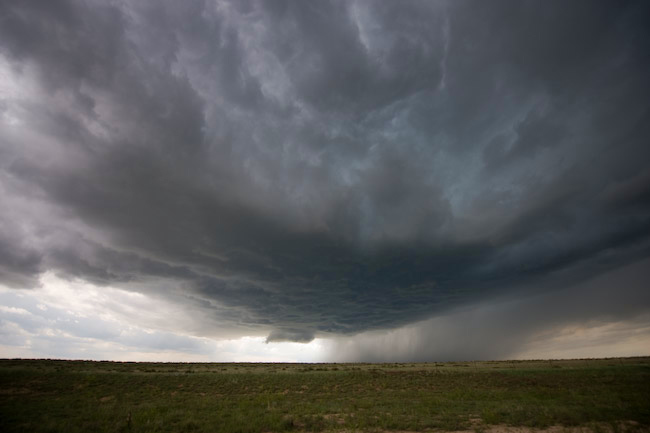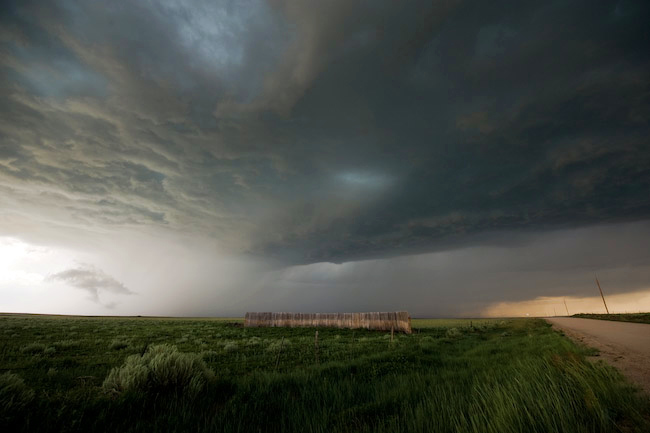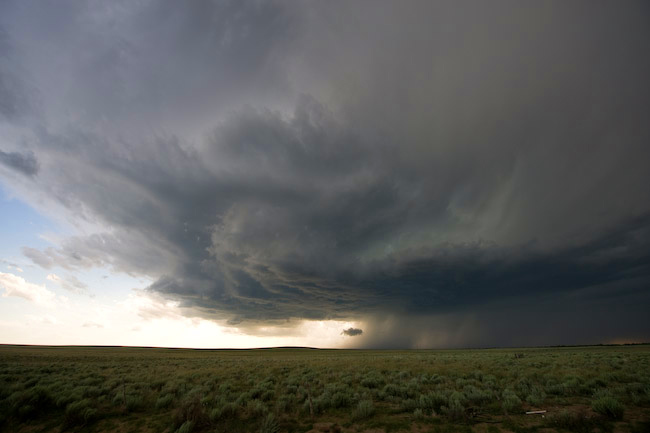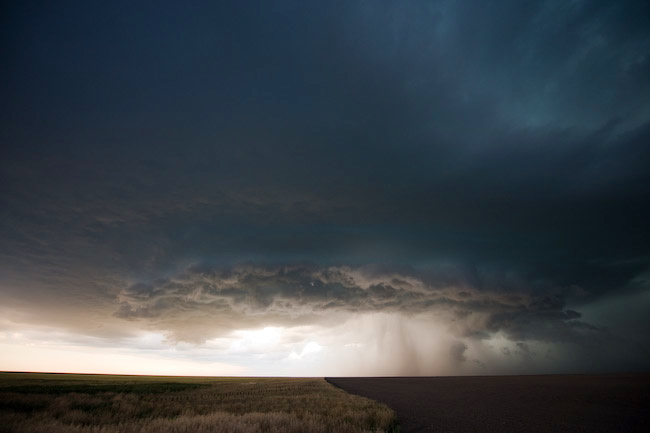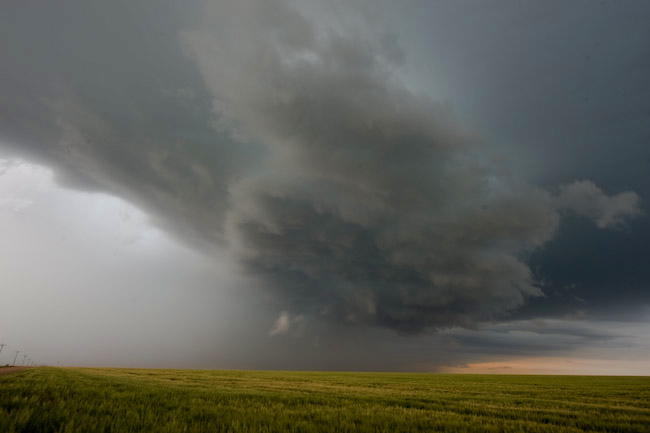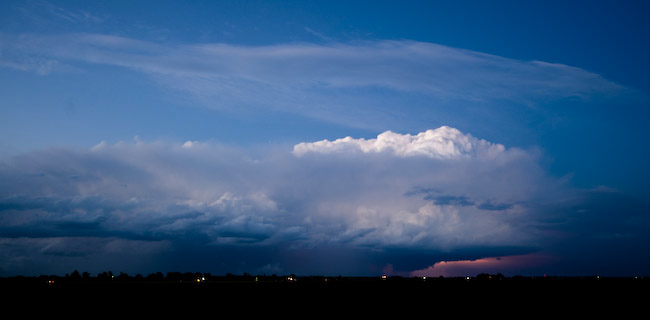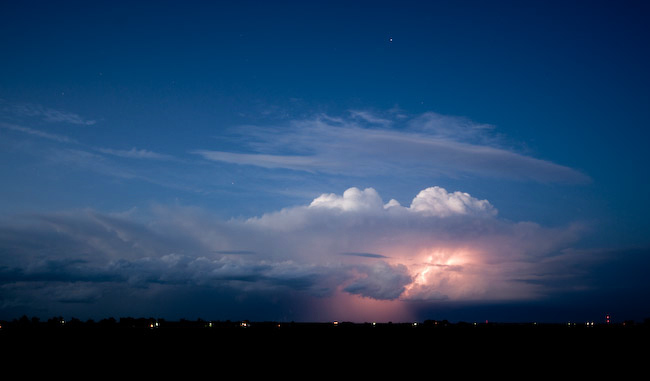June 12th yielded far better results than the previous day. Evan, Jay, and I started the day off with a hearty breakfast at the Big Texan steak ranch in Amarillo. We were initially torn between two targets: 1) Western Oklahoma along a decent looking outflow boundary where CAPE would be much higher or 2) upslope across eastern Colorado. Each had their pros and cons, but in the end we chose the eastern Colorado target, which was a wise choice. Given the dearth of upper level forcing, it seemed the only reliable way to force convection would be due to elevated heating. Primary elevated heating sources for High Plains severe storms initiation are 1) Raton Mesa along the CO-NM border 2) Palmer Divide that extends east from Palmer Lake/Monument, CO north of Colorado springs, and 3) Cheyenne Ridge which extends east along the WY-CO border from Cheyenne. The anticipated late afternoon wind field and moisture situation at the surface suggested to us that the best of these 3 would be the Palmer Divide. It was encouraging to see the 12z NAM and GFS both force convection in this area. Our target from Amarillo, TX was Kit Carson, CO.
It didn’t take long for storms to initate along the Hwy 24 corridor southwest of Limon, which is the classic initation point for Palmer Divide storms. We drove to Hugo, CO where we refueled and on our way. Our target storm started getting better organized west of Hugo on our approach to Hwy 71. From there we followed the high-based supercell southeast following Hwy 94 to Wild Horse. At one of our stopping points along Hwy 94, we ran into a huge conglomeration of small gnats. We think a small mesoscale boundary/wind shift brought these bugs in, because they just hit us without warning. They were everywhere inside the Jeep, so it took the remainder of the chase to try and get rid of all these distracting gnats! Anyway, the storm was largely outflow dominant as we followed it south and east from Aroya to Eads. At one point, the structure of the supercell revealed a nice barrel shape to it. Once we reached Eads, we actually drove south about 7 miles or so to try and get well south of the storm to see if we could observe more interesting cumulonimbus structure from afar. Unfortunately, this didn’t work out so well so we drove back north to Eads then continued east on Hwy 96 toward Sheridan Lake. The supercell had a rather steady-state outflow dominant structure its whole life, but it was pretty. It was a challenge to shoot the storm against a very luminous backdrop. Contrasts were harsh quite often, so I tried to shoot more structure looking north or north-northwest where there wasn’t an 8-stop luminosity difference between the dark storm and the really bright backdrop behind the storm. We followed the storm on some farm roads southeast of Sheridan Lake until it got too dark and the storm was slowly weakening. One last photography shoot location was along Hwy 50 where we finally got a good glimpse of the cumulonimbus top from a distance. Occasional cloud-to-ground lightning illuminated some structure — even a lowering — as the storm moved away from us into Hamilton County, KS.
